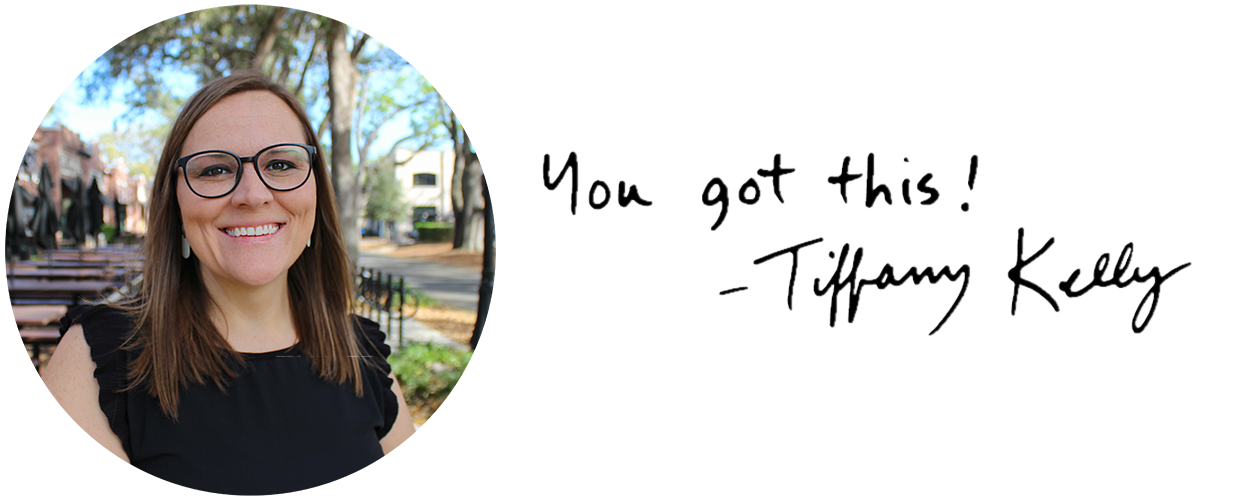HOW TO AVOID THESE 6 Church Rebranding Mistakes
1. Utilizing your Internal Creative Team
You may be inclined to let your internal creative team take a stab at a new brand identity, but church creatives are very rarely brand identity experts and many times designers within your organization struggle with being too close to the project. Before founding The Honest Pixel, I was on a creative team of a large multi-site church for 12 years and I designed a grand total of 1 official logo (for our student ministry) and a handful of marks for short-term usage like conferences or camps. Great graphic designers aren’t necessarily experts on the strategy needed to craft an authentic and versatile brand identity that can stand the test of time. Hire an expert who’s portfolio is full of logos you absolutely love. This is a one-time expenditure that’s worth getting right!
2. forgoing in-depth Brand Discovery
Now that you've hired a talented, creative, strategic brand designer, trust them to walk you through their tried and true brand discovery process. If your designer doesn’t include this step, it may be a sign that they don’t have the necessary experience for a significant rebrand. Or, it could mean that your budget is much lower than it needs to be, so your designer is trying to create a scope that’s realistic within the budget. Appropriate brand discovery requires a time investment. The most important advice I have for churches during this step is to be authentic, honest and vulnerable about who you are as a church body right now, today (not next year and not 5 years ago). It’s okay to be slightly aspirational in recognizing the trajectory of the church, but make sure you’re not just representing the church you hope to be. A really experienced logo designer is going to be able to craft a visual identity that captures the essence of who you are, allowing your unique mission and purpose to shine bright.
3. Including the wrong voice(s) in the process
A key factor in communicating authentically about the core features of your church’s identity is inviting the right voices into the room. It’s important to establish a hierarchy of 1 or 2 final decision-makers (too many equal votes tend to water down creativity). After that, identify 2-5 additional staff members or elders to be included in limited feedback who have their finger on the pulse of the church. The staff members who've been around the longest and have deep relationships within the church community can offer great insight. Make sure there’s much diversity in the room (age, race, life stage, ministry age group they lead). It’s also helpful if these key voices have good taste when it comes to aesthetics and visual communication.
PRO TIP:
Go a step further by giving each of these invitees a hoop to jump through to test their buy-in and passion for the rebrand. If your designer can give you a simplified brand discovery worksheet, have your staff invitees spend 10 minutes filling that out and return it to you by a given deadline. If they complete the step, you’ll know they have an appreciation for the process and its potential impact. If they don’t complete the worksheet, that might be a sign they don’t see the deeper purpose behind the project, which will make them unhelpful in collaborating on your new brand identity. Don’t invite them to be part of meetings or share their feedback.
PRACTICAL EXAMPLE:
If you’re a church of 3,000, a good example of a strategic survey of voices to include in the rebrand process would be your lead pastor, executive/associate pastor, pastor’s wife or campus pastor, communications director, elder who’s been at the church the longest, children’s director, and a young adult staff member with a great sense for creativity and trends.
4. Poor Implementation of Your New Brand Identity
Now that the first fun part is done (design), the second fun part can begin (implementation). Make a list of all the touchpoints where your current logo exists and make a plan, with deadlines for replacing the old with the new. Sometimes this is helpful to pair with another transitional moment in your church like a move of venue, opening a new campus, a website redesign or a yearly theme launch. This is a great time to include your internal creative team. Both digital and physical touchpoint need to be considered. When planning to update physical signage, consider pairing that step with a couple of exciting spatial refreshes like a new feature wall, a mural, an updated monument sign, or a modern exterior treatment. Graphic Designers with a specialty in both brand identity AND branded spatial design are extremely rare, but if you can find a designer with experience in both, they can be an absolute gem. The Honest Pixel has 2 specialties (brand identity and spatial branding) which makes church rebrands my most impactful projects by far! When the same expert can craft both your logo, and its story-telling ability in your space, the impact can be a game changer.
PRO TIP:
If you’ve taken my advice and hired an outside designer for the rebrand, and then tasked your internal creative team with rolling out that rebrand, approach that dynamic carefully. Creative people tend to feel extremely personal and sensitive about their work (it’s actually a good thing that's a sign of passion and commitment). To avoid hurt pride, make sure you’ve included your creative team in the rebrand process. For example, allow them to help you vet the designer you hire. Or allow them to pull together some inspiration images for the discovery phase. Include them in meetings and feedback. Or, consider paying your hired logo designer to spend an entire work day with the creative team, just to connect and learn from each other.
5. POOR TIMING
If you want to get the most out of a strategic rebrand for your church, timing is key. I’ve seen bad timing derail an otherwise positive rebranding process. Sometimes churches struggle with not having a firm enough understanding of their DNA, demographics, and vision, making the rebrand process less effective. Other times churches collaborate with a great designer, but then don’t follow through with making the necessary changes to roll things out. In both scenarios, valuable funds have been wasted and a process that should breathe life into the church’s mission can end up being a little disappointing.
6. LOW BUDGET
Maybe you’re a church leader who’s sensing a need for a rebrand and is beginning the process of finding a great logo designer to hire. Awesome! This is such an exciting step, but may I offer you some advice as a graphic designer with a decade and a half of experience in the church design world? If you want your rebrand to be highly successful, consider it an important investment. Remember that this is a one-time expenditure that’s going to affect your visual identity for years or decades. Invest the money to get it right the first time. You’ll actually save money in the long run if your logo looks great for a decade or more.
LET'S TALK MONEY!
I’ve seen professional designers charge anywhere from $1,000 - $11,000. Usually that rate depends on their experience/talent and the size of the project. Larger churches are naturally going to need a much more in-depth process and a larger package of deliverables. If you’re a medium-sized church and a designer’s rate is under $2500, that’s a red flag. For larger churches, less than $5,000 should cause you to question.
Church rebrand projects are super exciting and can have a huge impact in the trajectory of your visual footprint within your community. But a lot can go wrong along the way. Investing in the right designer to walk you through every step of the process will set you up to win. What you want to look for in a designer is lots of experience and professionalism, as well as a breathtaking level of talent and creativity.
Ready to BEGIN YOUR CHURCH REBRAND?
Contact The Honest Pixel to partner with brand identity expert, Tiffany Kelly, who can transform your vision into stunning visual realities.
AUTHOR
Hi! I'm Tiffany Kelly, owner of The Honest Pixel, an independent graphic design studio in Winter Garden, FL. I've been a creative professional all my adult life. I have a Master's Degree in architecture from RISD and over a decade of experience in graphic design. I've learned so much about design, freelance, and owning a business since starting The Honest Pixel in 2022.
I aim to be a trusted and authentic coach for other graphic designers, freelancers, or owners of small studios. I share honest tips and wisdom about things I'm putting into practice within my own business. My goal is to encourage and build up other creatives in a real way that broadens your community and impacts your success.

Latest Posts












